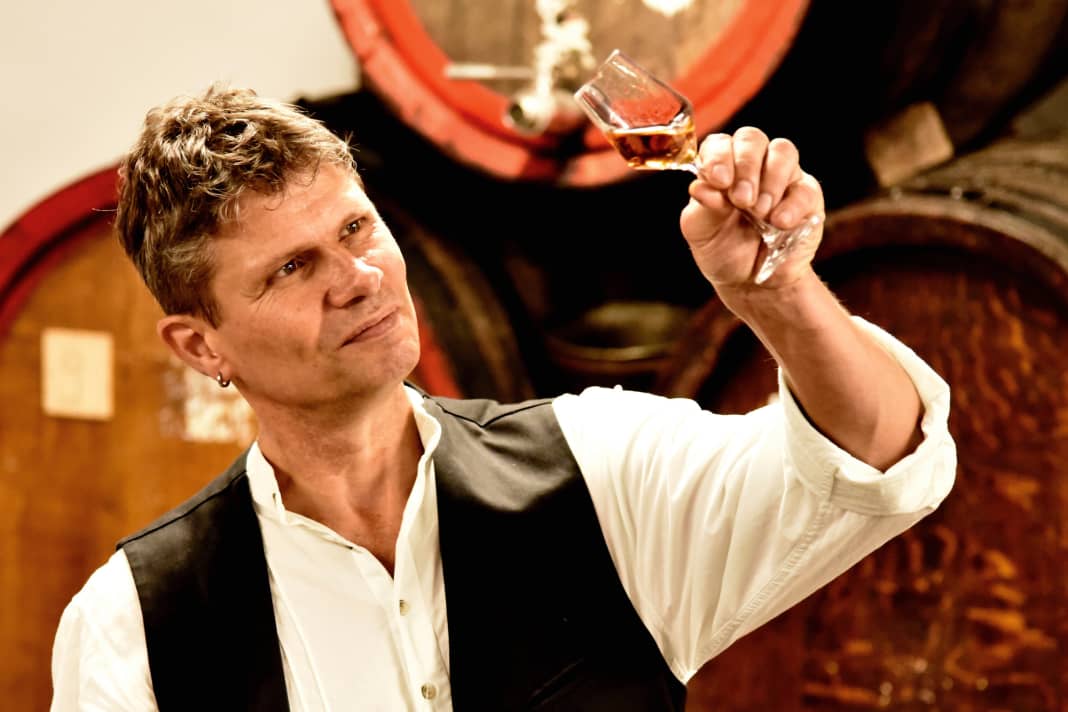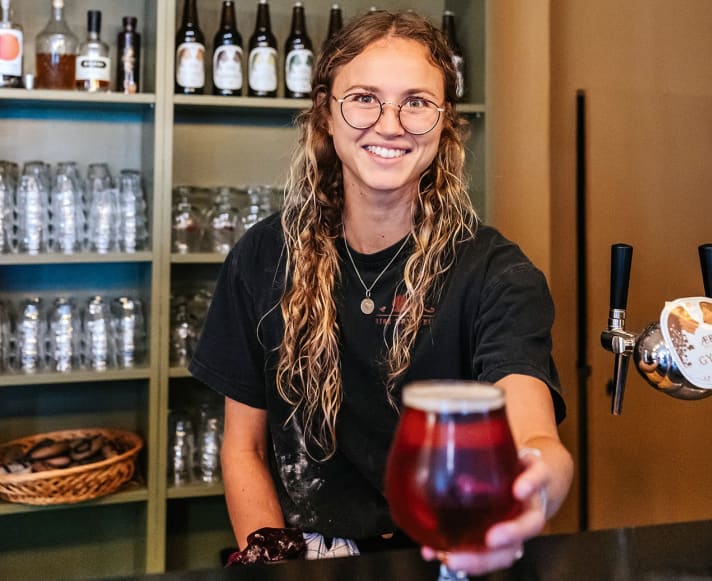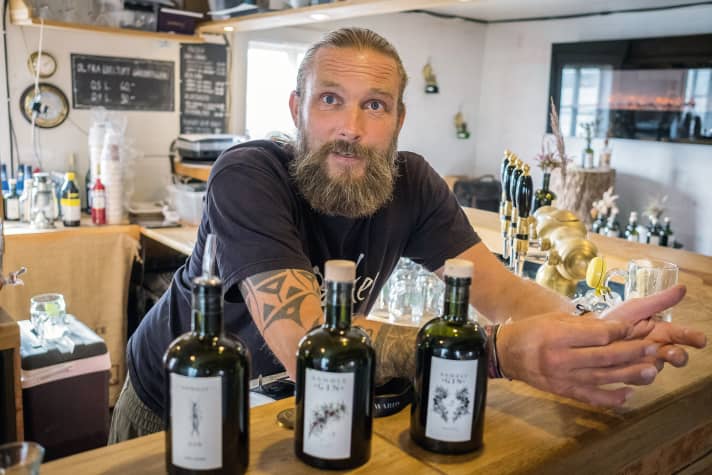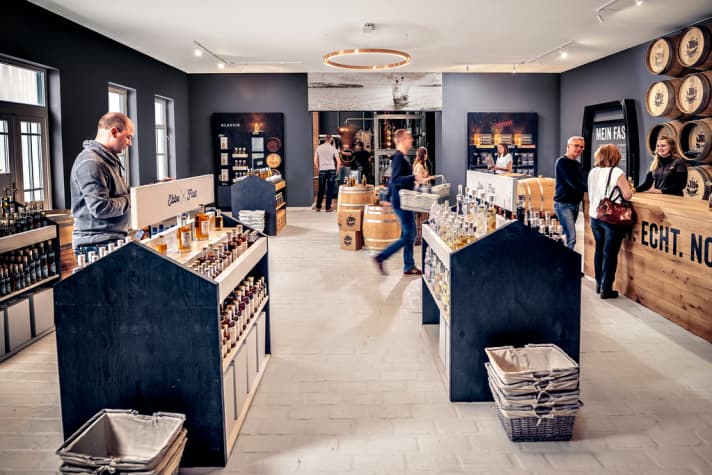Baltic Sea tips: 10 very special breweries and distilleries - a question of good taste
YACHT-Redaktion
· 11.01.2023






1. Johannsen Rum, Flensburg- Tradition obliges

Rumhaus Johannsen has been in Flensburg for 144 years. For 36 years, it was located in Große Straße, before moving to Marienburg. The company can still be found there today at Marienstraße no. 6, an old merchant's warehouse. It has defied world wars and economic crises and can long call itself the oldest rum house still in existence in Flensburg. So much history is not just something to be proud of. It is also an obligation for the current generation, which refines Caribbean rum for the local market.
Experts refer to this as blending. Prior to this, the distillates are stored in oak barrels for at least a decade. Blending then takes place, i.e. the rum is mixed and stored again. Only then are water and agricultural alcohol added: the blend. Finally, the resulting new rums are allowed to rest and mature one last time.
Bottled in bottles, the rum is given sonorous and - how could it be otherwise in a seafaring town - maritime names. In addition to the classic Jubilee and 1878 rums, the shop shelves also stock varieties with names such as "Windstärke 13", "Windjammer Pier 3", "Seemannsgarn" and "Segel setzen". Depending on the age, alcohol content and composition, there are subtle differences in flavour that rum fans will appreciate - and which are ultimately reflected in the price, of course.
Even for people who are less familiar with the high-proof product, it is an experience to immerse yourself in the world of rum production. At Johannsen, this is possible as part of a 90-minute guided tour, during which you learn everything about rum, from the cultivation of sugar cane in the Caribbean to the transport of the cane rum to Europe and its refinement here. It is exciting, educational and entertaining in equal measure. The price of ten euros includes a tasting of three types of rum and a liqueur.
Elsewhere in Flensburg, at Rumhaus Braasch in Rote Straße 26-28, there is even an entire museum dedicated to the noble distillate. Visitors can admire historic bottles and marvel at old machines that were used to process the sugar cane and distil the mash. The private collection of distiller Walter Braasch also contains pictures, texts and travelogues from times gone by. Admission to the museum, which was renovated in 2014, is free.
2. Ærø Bryggeri, Ærøskøbing/Rise- Rebirth

The island of Ærø did not have its own brewery for 44 years, although there was one in the small village of Rise from 1926 to 1961. It was particularly famous for its special Easter beer and ale. However, the energy crisis in the sixties cost the company its existence. In 2004, beer enthusiasts decided to revive the label in the almost 120-year-old building in Rise. A lot has happened since then: the two master brewers Bent and Gunnar have launched a range of ten exciting beers, including quaffable beers such as the walnut bock beer, pale ales, dark ale and more exotic beers such as a very special Christmas beer called "Strong Rudolf". There is even a seaweed beer on the bottle shelf.
For many crews, the beers that can be bought in supermarkets and pubs on the island end up on the cockpit table. And a beautifully designed gift box with a selection of varieties is very popular as a souvenir - even if the good Ærø stuff is not exactly cheap. A bottle in a pack of twelve costs around 3.80 euros.
Over the years, the small team has grown, as has the range on offer. A lunch café has been added to the brewery, which is open in July and August. Guided tours of the brewery are also available, in English if required. For groups of twelve or more, you can book your own guided tour (150 crowns/person). You will learn a lot about the brewing process, but you can also try a beer or two. Visits by appointment.
It's almost ten kilometres by bike from the harbour to Rise. That can be exhausting. However, if you take the free island bus to Ærøskøbing, you will pass the brewery and can get off there.
3rd Lille Brewery, Kiel- "The best ingredients and a portion of madness"

At the end of 2018, the "most modern craft beer brewery in Schleswig-Holstein" opened in Kiel's Eichhof neighbourhood, according to the operators. Max Kühl and Florian Scheske's standard repertoire includes Helles, Pilsner, Pale Ale, Lager, Stout, Wheat and non-alcoholic IPA. There are also seasonal and speciality beers. The promise of the two friends, who met at art college: "We will never make beer that tastes like nothing, but will try to create the next flavour explosion." You can see this for yourself - with a view of the brewing kettles - in the Lille taproom. Here, the brewery's own products flow from twelve taps, as well as beers from neighbouring breweries in northern Germany and Denmark.
4th Mosgaard Whisky, Oure- A piece of Scotland on Funen
Surrounded by apple trees with a view of the Langeland Sound, a small, fine distillery has been located on an old estate in the south of Funen for seven years. There, in Oure, Gitte and Jens Mosgaard have been pursuing their passion for producing fine whiskies ever since. With success. Mosgaard has been named Denmark's best distillery three times in the International Spirits Challenge. For 120 kroner, you can sample some of their award-winning whiskies at an on-site tasting. The nearest harbours are Lundeborg and Svendborg.
5. anholt gin- Juniper schnapps from the Kattegat

For gin fans, the "Dørken" at the harbour in Anholt is a great place to go. Jakob Kjærgaard is behind the bar there, producing great gin. The juniper berries he has distilled in Fjerritslev come from the island. They are picked by helpers in the autumn. The local water is even more important, he reveals, because it is "of a special quality". But try it for yourself! The journey to bed afterwards is short.
6th Störtebeker distillery, Mönchgut- Whisky with a Baltic Sea flavour

Störtebeker beer is not only familiar to many sailors on the coast. It has long since found its way from the East German coast to the supermarket shelves inland. The situation is different with Störtebeker whisky. It is only known to connoisseurs. It is also not produced on the mainland, but on the island of Rügen. And far away from the hustle and bustle of the seaside resorts on the southernmost tip of the island, the Mönchgut. The distillery is located in Alt Reddevitz, on a narrow strip of land that separates the Having from the Hagenschen Wiek.
The climate of the Baltic Sea is said to shape the taste of the classic single malt, which is matured here on the coast of Rügen for two years in French oak barrels and then rests for a further year in a Coopers reserve barrel to achieve a bright golden colour, a soft body and a woody aroma with notes of vanilla and coconut. In addition to whisky, Alt Reddevitz also produces - and sells - other spirits such as gin, rum, aquavit and herbal schnapps and liqueurs under the "Ebbe&Flut" brand.
The distillery is open to visitors. As part of a guided tour, you can look over the master distiller's shoulder and also take part in a small tasting (price: 20 euros). Appointments can be booked online via the homepage.
There are several mooring options for boats in the surrounding area. For example, at Moritzdorf in the Baabe marina or opposite Alt Reddevitz in Gager. From there it is only a few kilometres by bike to the distillery.
7th Spirit of Hven, Backafallsbyn- Whiskey, also with music
A few years ago, whiskey enthusiasts founded a distillery on the Swedish island of Hven, which has since made an international name for itself. Whiskey, but now also gin, vodka and aquavit, are produced and refined in barrels for many years. Some of them are even filled with music. It sounds like a joke, but the owners swear that the music releases different substances from the wood of the barrels. Good guided tours and tastings!
8th Island Brewery, Rambin- Rare beers from Rügen

Markus Berberich and Andries and Frans de Groen are the men for something special. In this case, for special beers. Since 2015, they have been reviving old types of beer and creating new, unusual varieties in their brewery in the west of Rügen. To do this, they use raw materials from all over the world. When it comes to hops, for example, they don't just rely on German varieties, but source them from Japan and Australia, among other places. In the brewing process - another speciality - they favour fermentation in open vats before the beer is bottled and left to mature. The design of the bottles is no less unusual. They are wrapped in natural paper and labelled with creative island motifs. The brewery trio has almost 30 beers on offer. Tastings in Rambin (8 euros per four types of beer) are available daily. The nearest harbour is Altefähr.
9th Rittmeister Distillery, Rostock- High spirits from fruit, herbs & grain
"On 5 January 2010, I started a new chapter in my life. It was cold, it had snowed at night and I switched on my brand new, copper-sparkling still for the first time. I distilled my first spirit that day." Twelve years later, the product range of Andreas Barnehl, head of the Rittmeister distillery on the southern edge of Rostock, includes various spirits: brandies and liqueurs, gin and whisky. The distillery is located in the country hotel of the same name, and tastings are available on request.
10th Alstrup Vin, Samsø- Wine at 56 degrees north: how good can it taste?
Anyone who has ever been to Samsø will sooner or later rub their eyes in amazement in one of the island supermarkets: "Chateau Alstrup" is on the shelf, usually as a rosé or white wine. Grown on the island! Founded by Jette and Stig Hedeboe in 2004, they produce wines on an old four-sided farm dating back to 1786. It's easy to miss if you cycle there, as the buildings are surrounded by vines. Less well-known grape varieties such as Rondo, Regent and Bolero are cultivated here. The wine is matured unfiltered in French oak barrels. The programme includes white wine cuvées, a rosé and a cassis.
The question that arises in the mind of anyone halfway interested in wine is, of course: Can it taste good, a wine that is grown so far north? Ultimately, everyone has to find the answer for themselves. After all, a visit to the island is always accompanied by enthusiasm for Samsø and its original inhabitants. At a private wine tasting in the cockpit with crews from neighbouring boats, the verdict was naturally divided.

